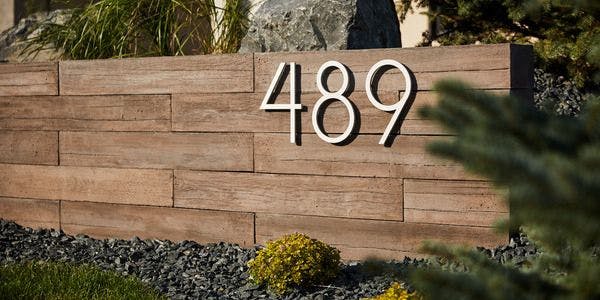It’s What’s Inside That Counts
Rosetta Hardscapes outdoor living space products are known for their deeply textured, richly embellished exteriors. But the smart engineering and reliable materials employed to craft them make them market-leading.
A CONCRETE COMPARISON:
Wet Cast vs. Dry Cast Hardscape Material

Wet Cast
Cost
Entry into wet casting is generally less costly than dry cast as equipment costs can be controlled based on the preferred level of sophistication. Wet cast concrete is more flexible in its mixing and conveyance as compared to dry cast. More forms are necessary to increase production since extended curing time is required for wet cast.
Production
Wet cast concrete has properties that make a highly desirable product. Poured into a polyurethane mold, wet cast will create a product with higher definition texture and its liquid consistency allows for more vibrant colors and faster filling of forms.
Design
Giving project owners the look they want is typically more achievable with wet cast, which offers more versatile finishes and and colors due to its manufacturing process. Wet cast is far and away the best option for those who wish to emulate the appearance of natural stone.
Installation
The consistency of wet cast enables the inclusion of detailed engineered elements like block shear heels, spacing tabs, interlocking components, and chamfered edges.
Durability & Maintenance
Wet cast has a lower porosity which allows it to perform better in more abrasive environments like water applications.

Dry Cast
Cost
Because it’s not possible to pour dry-cast concrete from a truck, an on-site batch plant is a must for dry cast production, significantly increasing start-up costs. Fewer forms are needed for dry cast production since curing time is short and forms can be reused multiple times over the course of a day.
Production
Uses a very low water-to-cement ratio, resulting in a stiffer, semi-dry mixture. Loaded into rigid steel molds and pressed with very high hydraulic pressure applied by complex machinery. Lower water content allows for quicker demolding and curing times and faster production.
Design
Less water in the mix results in a rougher, less-detailed finish. Color consistency and vibrancy continue to lag behind wet cast, though the palette of dry cast colors available has expanded over the years.
Installation
Can include features that aid installation, but the high-compression production process makes it difficult to produce blocks with effective assistance elements.
Durability & Maintenance
The mix's water-to-cement ratio results in better cement particle packing, making dry cast stronger than wet cast under some conditions. Can be beneficial for large industrial or commercial projects when both reasonable strength AND high visual appeal aren't necessary.
Retaining, Garden & Seat Walls
Rosetta Hardscapes landscaping walls help define your outdoor living space and blend seamlessly with your home’s natural surroundings.







Patio Slabs & Driveway Pavers
Designed to be different, Rosetta’s paver and slab styles run from rustic to contemporary, and everything in between.

Grand Flagstone
Mimicking natural flagstone slabs, the irregular shapes blend beautifully in backyards.

Old Mission
Classic permeable pavers suitable for driveway installations, but can also be used in patios.






Amaro
Add a pop of rich color to a driveway, walkway, or patio with this accent paver.

Fire Features
A selection of styles, textures, and sizes ensures a Rosetta Fire feature will fit the vibe of any outdoor space.


Steps, Caps & Accessories
Details matter when creating a space people won’t want to leave. Rosetta steps, caps, and coping finish projects with style.



Column Caps
Multiple sizes appropriate for capping off any column

Bullnose Coping
The smooth edge is perfect for steps, caps, and pool applications.


Belvedere Coping
Irregular shapes perfectly polish your rustic wall.
See How You Can Make Rosetta Hardscapes
If you’re envisioning how popular these selections could be in your market, answer a few questions about your goals, and we’ll continue the conversation.
FAQ
What are the biggest advantages of producing wet cast concrete pavers and wall blocks?
The wet cast process produces unique, high-definition textures that dry cast simply can't compare to. Dry cast pavers and wall blocks are produced through high-impact vibration and compaction. This manufacturing process, combined with the characteristics of dry concrete mix, severely limits the ability to create defined texture in dry cast products. Wet cast production also is more flexible for vibrant color mix designs that allow producers to better mimic the appearance of natural stone.
How do I make colored blocks?
The preferred method of coloring Rosetta Hardscapes products is adding integral color (liquid or powder) into the concrete batch prior to pouring the forms. If you do not have the means to color integrally you can use shake-on color to get the look you're seeking. Shake-on coloring is a manual process that requires skill to ensure consistent coverage. Also, keep in mind that the shake-on color can rub off onto hands and clothes.
What is the difference between wet cast and dry cast blocks and pavers?
The two most important differences between wet cast and dry cast relate to their respective production processes.
Wet cast concrete uses a higher water content for a more liquid mix that is poured into forms and molds, while dry cast has a lower water-to-cement ratio for a stiffer mix. Wet cast requires vibration to remove air bubbles and ensure a smooth surface. Dry cast relies on high-pressure compaction methods achieved with complex and often very expensive machinery.
Wet cast's mix and vibration process produces more decorative and intricate patterns and designs in blocks, slabs, and pavers, replicating the look of natural stone much more effectively than dry cast can.